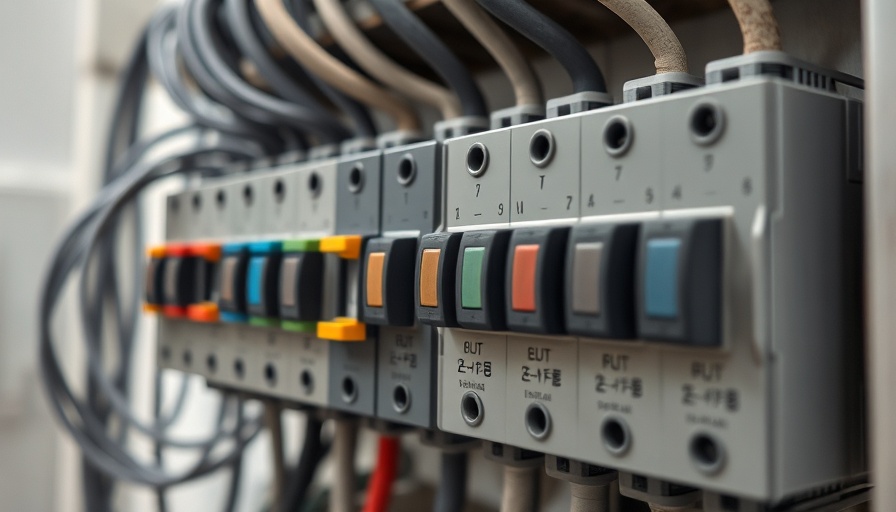
Understanding 50 Amp Circuits: The Basics
When it comes to handling electrical loads in your home, understanding the use of a 50 amp circuit is crucial. Typically used for high-demand appliances like electric dryers, hot tubs, and ranges, 50 amp circuits require careful attention to ensure safety and efficiency. According to the National Electrical Code (NEC), you need to select appropriate wire sizes for these circuits. For copper wires, the preferred gauge is 6 AWG, while aluminum wires should be 4 AWG to adequately handle the load and adhere to safety regulations.
The Importance of Selecting Correct Wire Sizes
Wire size is more than just a number; it's about ensuring your circuits can safely carry the current required by connected appliances without overheating. Using an undersized wire for a 50 amp circuit can lead to dangerous situations such as overheating, potential insulation damage, and fire hazards. In contrast, oversized wires may be unnecessarily expensive and cumbersome. This balance is critical, particularly in homes where multiple appliances operate simultaneously.
Key Considerations for Your 50 Amp Installation
Even though the standard wire sizes are 6 AWG for copper and 4 AWG for aluminum, several factors can influence the final decision. One critical aspect is the length of the wire. Longer distances can lead to voltage drop, which diminishes the efficiency of power delivery. Thus, if you're working with a run exceeding 100 feet, fostering safety via additional gauge may be necessary.
Moreover, the ambient temperature is an important factor; if you anticipate installation in a heat-prone area, bigger wire may be required. Remember, wire insulation types such as THHN can withstand higher temperatures, further influencing your wire choice.
Recognizing Potential Risks: Why Getting it Wrong Matters
Choosing the incorrect wire size for your 50 amp circuit poses serious risks ranging from electrical fires to equipment damage. If wires do not adequately support the current flowing through them, overheating can result in insulation breakdown, leading to short circuits or fires. Moreover, using wires that cannot handle the proper load can trigger useless circuit breaker interruptions, affecting the performance of connected appliances.
The Benefits of Consulting a Professional
While DIY projects are fulfilling, electrical work often requires expert knowledge. Consulting a licensed electrician ensures proper wire sizing and installation practices. Their expertise can avert costly mistakes and ensure compliance with local codes, ultimately leading to peace of mind in your home's electrical safety.
Concluding Thoughts on 50 Amp Circuits
By understanding the requirements for 50 amp circuits, you can make informed decisions for home installations that prioritize safety and efficiency. Whether you're connecting a new electric range, subpanel, or hot tub, selecting the appropriate wire size is vital. Always prioritize consultation with a professional to ensure that your electrical system remains robust, efficient, and safe.
 Add Row
Add Row  Add
Add 




Write A Comment